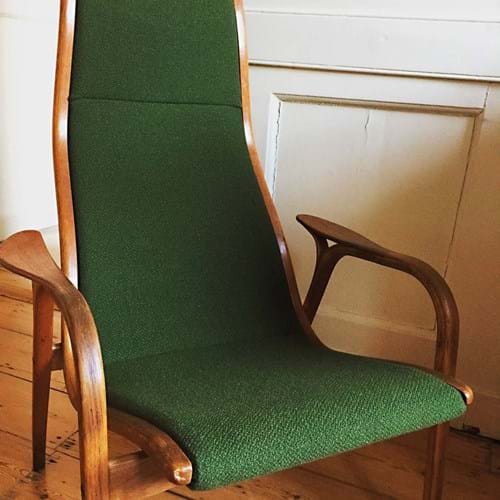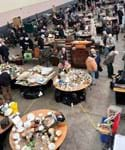Key sections of the proposals for dealers and auctioneers include:
The new approach will apply to the following supply-chain actors:
(a) Manufacturers
(b) Importers
(c) Further Suppliers:
i. Distributors of new upholstered furniture
ii. Second-hand furniture dealers (including auctioneers and businesses operating via online marketplaces).
iii. Charity shops that sell upholstered furniture to raise funds for charitable purposes.
iv. Landlords and letting agents who let out furnished accommodation. This includes holiday homes (Airbnb or similar).
v. Those who hire out furniture in the course of a business.
vi. Local authorities (and others) who supply furniture as part of a statutory function to provide accommodation for vulnerable persons, including the aged and infirm, or accommodation for homeless persons.
(d) Re-upholsterers
Obligations will sit with manufacturers, importers and further suppliers. Those operating further down the supply chain will be required to be appropriately diligent that they are supplying safe and compliant products, whether in a retail setting or as part of the rental of property.
Further Suppliers must have:
Acted with due care to ensure that products meet the essential safety requirements and that the manufacturer and any importer has complied with their obligations
Ensured the permanent label has been affixed
Ensured that any imported product has the importer’s details affixed or included
Ensured the storage/ transportation of the product does not affect its conformity with the essential safety requirements
The following list of items are considered to be in scope:
(a) Sofas
(b) Armchairs
(c) Sofa beds
(d) Futons
(e) Pouffes / Padded foot stools
(f) Bean bags with a surface area 10,800 cm2 or greater,
(g) Floor cushions with a surface area 10,800 cm2 or greater,
(h) Scatter cushions with:
(i) width and height 45cm x 45cm or greater, or
(ii) with a surface area 4,050 cm2 or greater,
(i) Seat pads with:
(i) width and height 45cm x 45cm or greater, or
(ii) with a surface area 4,050 cm2 or greater,
(j) Mattresses with width and height 75 cm x 90 cm or greater,
(k) Pet beds with a surface area 10,800 cm2 or greater,
(l) Divans / Upholstered bed bases
(m) Upholstered Bedsteads
(n) Headboards and footboards
(o) Mattress toppers
(p) Outdoor furniture (unless labelled as not to be used/ stored inside)
In order to be supplied, second-hand upholstered products manufactured after 1st January 1950 must bear the original permanent label.
This can mean any one of:
a) A permanent label as required by the new approach,
b) A permanent label as required by the Furniture and Furnishings (Fire) (Safety)
Regulations 1988, or
c) A permanent label as required by the Upholstered Furniture Safety Regulations 1980.
Second-hand products must not be supplied if there is reason to believe that the product would no longer be in conformity with the relevant regulations.
Suppliers must also consider whether upholstery has been added in the course of reupholstery or repair after the introduction of the new approach. If there is reasonable cause to believe this is the case, the product must also have a permanent re-upholstery label in order that it can be supplied.
Given that it is not feasible to re-test upholstered furniture before resupply, and it is not desirable to send products to landfill unnecessarily, this policy strikes a balance. As well as ensuring that the permanent label remains attached, suppliers of second-hand upholstered products will be asked to inspect the product and ensure they do not have any reason to believe it would no longer be in conformity.
Additionally, the new approach requires suppliers to act with due care to ascertain whether there is evidence of re-upholstery or repair having been carried out. If the re-upholstery or repair work has been carried out subsequently to these new regulations taking effect, there should be a re-upholstery permanent label with compliance and traceability information affixed to the upholstered product, alongside the original permanent label. If that label is not present, the product must not be resupplied. If the re-upholstery or repair was carried out prior to the new regulations taking effect, there will be no re-upholstery permanent label. In this scenario suppliers just have to consider whether there is evidence to suggest the product may no longer be in compliance with the essential safety requirements or the requirements of the relevant regulations.
Online marketing
Anyone supplying an upholstered product online must ensure that the following information is displayed prominently on the web page in question:
(a) the information set out on the permanent label of the upholstered product,
(b) the information set out on any permanent label affixed to the upholstered product in relation to re-upholstery
Consultation on the new approach to the fire safety of domestic upholstered furniture is available via this page: gov.uk/government/consultations/smarter-regulation-fire-safety-of-domestic-upholstered-furniture














